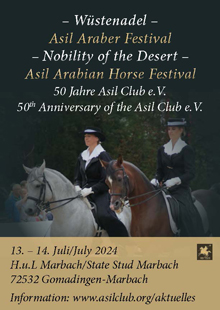Anyone who deals with horses has to be knowledgeable in many areas: breeding, rearing, feeding, keeping, riding, etc. And many people believe that they can get this knowledge from books (or worse, on Facebook), or they get advice from self-proclaimed gurus. Reading educates, that’s true, but in this case it’s only half true. Because theoretical knowledge is one thing, but practical experience is another! And the latter in particular is often lacking.
Systematic and selective horse breeding is around 200 years old – back then the horse was still part of everyday life and everyone had a more or less close connection to the horse. The old cavalrymen in the remounting stations or the old stable masters assessed, evaluated and classified thousands of horses according to their quality. The knowledge gained was a wealth of experience that is hardly possible for anyone today, because hardly anyone is confronted with such a large number of horses in their life. When it comes to gaining experience, today’s horse owner and breeder is inherently in a worse position than our predecessors. It is difficult to compensate for this experience with expert books, and the old teachers are becoming fewer and fewer.
So it’s always a matter of balancing: do you follow the strictly scientific course, the empirical values, or the pseudo-experts? And although in my heart I trust science, many years of experience are also a valuable treasure trove of knowledge, especially in horse breeding and keeping. Ultimately, the best way to go is with a well-balanced mix of science and experience. Let’s take the raising of young horses, for example: In the large state stud farms, especially in Eastern Europe, the young horses were raised extensively on huge areas – during the day they ran around in the pasture and in the evening they went to the spacious loose stables. For their feed ration, they were tied up, cleaned a little with the root brush and their legs were lifted – and that was it. This is how they lived until the seriousness of life began. Experience has shown that a lot of exercise strengthens tendons, joints, muscles and the cardiovascular system – and science says nothing different. Today, however, the hobby breeder and horse owner believes that he can make up for the lack of exercise-intensive rearing with a lot of “pampering”. Instead of romping around in the pasture with their peers – 24/7 – the foal, the yearling, the two-year-old is already diligently “practicing” walking over poles, listening to commands or being given a ball as a playmate. Instead of following the experiences of past centuries, people follow groundwork gurus.
Horse breeding is a rather conservative area of animal breeding, so perhaps we shouldn’t follow every fashion, but rather the experiences of the last centuries.
Gudrun Waiditschka
Feb 13 2024













